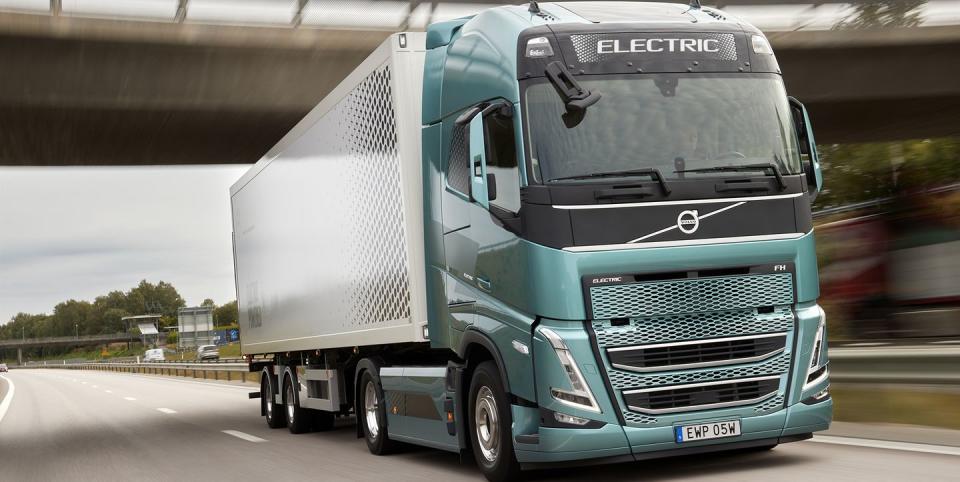US Wants Trucks and Buses to Be All-Electric by 2040

US joins non-binding Global Memorandum of Understanding (Global MOU) on Zero-Emission Medium-and Heavy-Duty Vehicles at COP27 climate summit, aiming for 100% of zero-emission vehicles by 2040.
Several truck makers have recently debuted electric versions of their medium- and heavy-duty trucks.
The signing of the MOU follows efforts by a number of individual US states to phase out sales of gas- and diesel-engined cars and light trucks by 2030 or 2035.
The US has signed on to an effort to achieve 100% zero-emission bus and truck sales by the year 2040, in a move announced at the COP27 climate summit in Egypt last week. The non-binding Global Memorandum of Understanding (Global MOU) on Zero-Emission Medium-and Heavy-Duty Vehicles charts a path toward an electric and hydrogen-powered future for segments that have received relatively little attention in the past decade, even as interest in consumer EVs has grown.
A total of 16 other countries signed the MoU, including the Netherlands, New Zealand, Norway, Uruguay, Turkey, Austria, Canada, and others.
"We have to work together across oceans and borders to meet our clean energy goals," said US Secretary of Energy Jennifer Granholm, who was present at the summit. "This global partnership will leverage the billions of dollars in clean transportation investments provided by President Biden's agenda to drive technological innovation, lower vehicle costs, and reduce transportation emissions."
The signing of the MOU by the United States follows a bicameral letter to President Biden, led by Senator Martin Heinrich (D-NM) and 15 other US lawmakers, urging the president to take action to reduce emissions produced by trucks and buses.
A number of large companies, including truck maker Scania and logistics giant DHL, have also endorsed the non-binding MOU.
"As a global leader in logistics and delivery services, DHL Express has long recognized the important role that our industry plays in decarbonizing the transportation sector," said Greg Hewitt, CEO of DHL Express USA.
Is the 2040 zero-emission goal for trucks and buses attainable?
Over the past three years a number of truck makers have rolled out battery-electric trucks, as have a number of bus manufacturers. But quite a bit still depends on ZEV truck and bus purchases by end users, as well as the creation of charging infrastructure specific to long-haul trucks.
Just over the past year we've seen a surprising number of debuts from Mercedes-Benz, Volvo and a handful of other truck makers, including the eActros LongHaul, that are trying to make long-distance EV trucking a reality. But even the manufacturers themselves acknowledge the types of routes served by trucks matter quite a bit at this stage, as fleets have to invest in charging infrastructure at both end points. Daily routes of a couple hundred miles by heavy-duty EV trucks are possible at the moment, and they are being planned by fleet operators between ports and warehouses, allowing for a predictable charging schedule.
The situation with buses is a bit more complex stateside. Unlike Europe and a number of other regions, the US had not invested heavily in trolley-buses or battery-electric buses, and offerings from manufacturers remain on the modest side. The issue of charging infrastructure is perhaps less problematic than for long-haul trucking, as buses tend to charge at their own depots and serve a limited geographic area.
So it will certainly be a while before we see a battery-electric Greyhound bus travel for hours at a time between charging stations.
Of course, there is no penalty if this goal is not reached by 2040—we don't need to tell you just how binding a non-binding memorandum of understanding is. As this is several presidential administrations into the future, the non-achievement of this target can be later explained away by market factors, as we've seen with other such long-term agendas.
Is the 2040 goal for medium- and heavy-duty vehicles realistic, or is this largely political posturing? Let us know in the comments below.


 Yahoo Autos
Yahoo Autos 